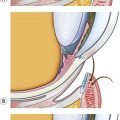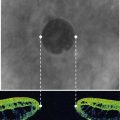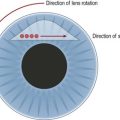CHAPTER 1 Introduction
The craftsman, the technician, and the complete surgeon
From time immemorial people with pain, illness or injury have sought the help of ‘others’. The ‘others’ often develop skills and knowledge which distinguish them from those seeking their help. Over time, these ‘others’ were recognized as professionals: shamans, medicine men, iatromants, and other healers1,2. The healing methods included invocation of gods or spirits, exorcism of demons, applications of heat or cold, ingestion of herbs and drugs, and application of a variety of mechanical approaches: bodily manipulations, including couching of cataracts, and removal of unwanted materials such as thorns, pus, worms or tumors. In Europe the mechanical methods, which often involved cutting, became the purview of the barbers (then barber surgeons), or their offspring, surgeons3–5. The field of surgery, as we now know it, did not stem from in academic departments, or even from the field of medical practice, but rather from artisans dealing with physical problems. All too often limitations in technology predetermined that the result would be of limited help. The great surgeon of the past was fundamentally a great craftsman.
In the coming years, ophthalmic surgeons need to combine empathetically the art of the craftsman with the knowledge of the excellent scientist. Fortunately, the methodologies are not mutually exclusive, though they are materially different and have differing methodologies. First and foremost, the humanity and grace of the surgeon as a master craftsman must never be lost. Unfortunately, this happens too frequently6,7. Physicians, especially academicians, rarely understand the importance of the apprenticeship system of learning. It is not chance that surgeons seeking the best training often associate themselves with individuals whom they consider the best surgeons and teachers, that is, specific persons, rather than choosing a particular training institution. The trainees will then say, ‘I worked with Dr. X, rather than at ‘medical center Y.’ The reason for this is clear, especially in ophthalmology, which does not usually require large teams of physicians and surgeons. Skills are best learned – whether painting, golfing, piano playing, or performing surgery – from a master teacher. The apprentice system is still the best system for developing the best crafts people, including the best surgeons. The procedural skill alone is not enough. The truly great painters, musicians, poets, dancers, sculptures, silversmiths, blacksmiths, and surgeons, were in fact great technicians, but they also possessed an essential dimension which made their creations works of art. That dimension was their understanding of ‘the human condition’, their reverence for wonder, their recognition of the interconnectedness of all things and their acknowledgment of (and often disappointment with) their own limitations. The great surgeons realize all too well that even now the ability to cure completely is only rarely within grasp. They recognize that the patient is often as disabled by the emotional reaction to the disease as by the disease itself. Great surgeons understand the uniqueness of each patient and each patient’s response to disease. They respect the relationship between the patient and the surgeon. The responsibility of a surgeon is to support the patient during difficult times, to comfort, and to care. Yet superimposed upon this is an obligation to assess craftsmanship in a scientifically valid way, to know the science of surgery as well as the craft. Surgeons must learn more about both our tools and our material (i.e., the patient) and how these two elements interact. Medical students need to learn about human nature and the human condition, while simultaneously becoming superb technicians.
We would, in the following pages, delight in providing answers to some of the questions posed above. Where we can, we will, but often we cannot. Readers must recognize the tentative nature of the material discussed without being timid. They must assess the available information and then act decisively and authoritatively as this is part of the craft. However, to be competent and ethical (these two characteristics are almost synonymous), they must fully recognize and acknowledge their own limitations, as well as their skills8. Socrates’ admonition about the fundamental importance of knowing oneself is especially essential for surgeons. Those who do not know themselves well try to do what they cannot or should not do, or, conversely, fail to act because of inappropriate caution. The trait common to impaired physicians is their failure to know themselves – their lack of valid insight.
It is essential that the surgeon do everything reasonable to gather information upon which to base a decision. For example, if one is unsure whether the visual field is truly worse in a glaucoma patient, the field test should be repeated. Similarly, if one is uncertain about the quality of a visual field examination, the test should be repeated by someone able to obtain a valid examination. It is true that we should ‘first do no harm’, but we must also remember that we are held accountable for what we do not do as well as for what we do9. To let a glaucoma patient’s vision deteriorate because we are afraid of the risks of surgery is equally as damaging as operating when not required to.
The clinical trial
The basic principles of the valid clinical trial are as follows:
Rather than describing the methodology in greater detail, the readers should refer to excellent reviews dealing with the ethical, methodological, analytical, and clinical aspects of clinical trials10–12. This information is readily available. The aspects that are often lacking, however, are the interest and the effort needed to consider, conceive and carry out these trials. Many do not need extensive or external funding. Pilot studies are critically important and can lead to larger studies in which the results suggested in the clinical trials can be confirmed, negated, or modified.
Training required to become a practicing ophthalmic surgeon
Training in ophthalmic surgery begins with the residency period13. The resident’s surgical experience should involve all years of this training, during which considerable time is spent as an assistant to senior instructors. Later the trainee should evolve into the primary surgeon and perform a wide variety of ophthalmic procedures. Likely the optimal mode of progression is that shown in Box 1.1.
Box 1.1
Optimal mode of training ophthalmic surgeons
Of course, no matter how carefully planned and supervised a residency program, all complications cannot be prevented. The intelligent ophthalmic surgeon should learn from these unfortunate events. If surgeons do not have a broad exposure to the complications of ophthalmic surgery, they will not be prepared to cope with them when they do occur. It should be remembered that the skillful teacher can lead the neophyte surgeon through difficult experiences; the confidence and knowledge that comes from learning the proper way to handle such situations is an essential component of a fully developed surgeon. Many studies have shown that surgical outcome when performed by well-supervised residents is satisfactory14–16. Learning surgeons must develop first-hand familiarity with the humbling truth that at all times the surgical result may be less beneficial than desired by the patient, the surgeon, or both. Training programs that avoid exposure to cases of great complexity or to cases where a poor result could especially alter a patient’s lifestyle are doing a superficial job of introducing the physician to the field of surgery.
Many of the details and even some of the principles learned by the student will change with time. The ophthalmic surgeon must maintain a highly flexible approach to learning. Modifications and improvements develop at such a remarkable rate that every surgeon must realize that techniques widely used today may be outdated in the very near future. There are a large number and a variety of postgraduate courses now available, which should be utilized by the mature surgeon (see Box 1.2). Constant self-criticism (not self-doubt) and re-evaluation of principles and practice are required for continued growth.
Box 1.2
Postgraduate courses for the ophthalmic surgeon
India
1 Bishop WJ. The Early History of Surgery. London: Hale; 1960.
2 Crowlesmith J, editor. Religion and Medicine. London: Epworth, 1962.
3 Glaser H. The Road to Modern Surgery. London: Butterworth; 1960.
4 Spaeth GL. Ocular Surgery for the New Millennium. Ophthalmology Clinics of North America, vol. 12. Philadelphia, PA: WB Saunders; 1999.
5 Spaeth GL. Ocular Surgery for the New Millennium. Ophthalmology Clinics of North America, vol. 13. Philadelphia, PA: WB Saunders; 2000 Part 2
6 Carey B. When trust in doctors erodes, other treatments fill the void. The New York Times February 2006, A1.
7 Newton MJ. Demonization and deprofessionalization, Chapter 9. In: Without Your Consent: The Hijacking of American Healthcare. New Canaan, CT: Paribus Publishing; 2007:147-163.
8 Hyde GL, Miscall BG. Impaired surgeon – diagnosis, treatment and reentry. American College of Surgeons Board of Governors Committee on Physicians’ Health, 1995.
9 ‘… we have left undone those things which we ought to have done …’ Evening Prayer. The Book of Common Prayer. New York, NY: Oxford University Press, 1979.
10 Flather M, Ashton H, Stables R. Handbook of Clinical Trials. London: Remedica Publishing; 2001.
11 Handbook for Good Clinical Research Practice. World Health Organization. http://whqlibdoc.who.int/publications/2005/924159392X_eng.pdf., 2002.
12 Meiner CL, Tonascia S. Clinical trials: design, conduct, and analysis. New York: Oxford University Press; 1986.
13 Oetting TA. Surgical competency in residents. Curr Opin Ophthalmol. 2009;20(1):56-60.
14 Corey RP, Olson RJ. Surgical outcomes of cataract extractions performed by residents using phacoemulsification. J Cataract Refract Surg. 1998;24(1):66-72.
15 Tarbet KJ, Mamalis N, Theurer J, et al. Complications and results of phacoemulsification performed by residents. J Cataract Refract Surg. 1995;21(6):661-665.
16 Thomas R, Naveen S, Jacob A, et al. Visual outcome and complications of residents learning phacoemulsification. Indian J Ophthalmol. 1997;45(4):215-219.







